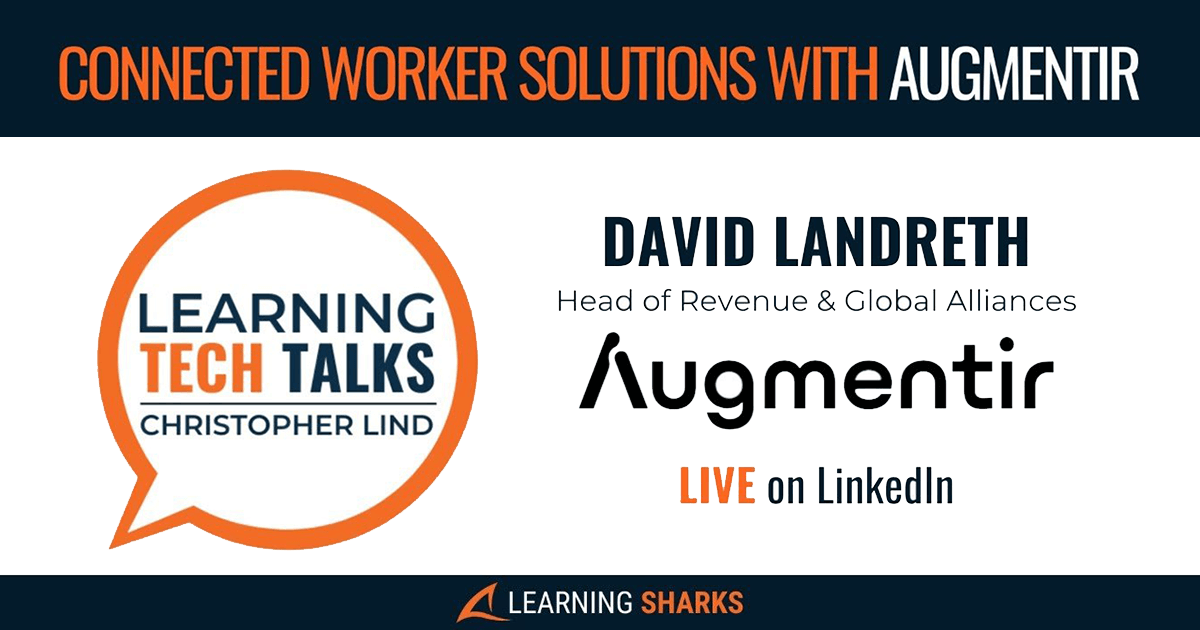These virtual events were a great way to connect with manufacturing professionals and discuss some of the industry’s top challenges and topics – workforce transformation, learning and development, lean manufacturing, and autonomous maintenance.
October was an exciting month in the virtual manufacturing world! Augmentir had the pleasure of participating in several virtual events including the American Manufacturing Summit, Gartner Supply Chain Symposium/Xpo, and the Enterprise Wearable Technology Summit (EWTS). Each of these virtual events were a wonderful way to connect with manufacturing professionals and discuss some of the industry’s top challenges and topics – workforce transformation, learning and development, lean manufacturing, and autonomous maintenance.
EWTS
The Enterprise Wearable Technology Summit (EWTS) is the longest-running and most comprehensive event dedicated to the business and industrial applications of wearables, including AR/VR/MR glasses and headsets, body-worn sensors, and exoskeletons. This year’s event took place in four bite-sized conference days (every Wednesday from October 6-27, 2021), with community, networking and additional content drops throughout the rest of the month. This unique format allowed for great networking as well as some very valuable sessions. In one of the polls, 32% said that Remote onboarding and training was the top use case for immersive/wearable technology at their company.
American Manufacturing Summit
The American Manufacturing Summit is a leadership focused meeting designed to bring global manufacturing, operations, engineering, quality and supply chain leaders together to discuss current trends, strategic insights, and best practices in an ever-evolving manufacturing environment. Dave Landreth, Augmentir’s Head of Customer Strategy, had the opportunity to lead a fire-side chat in discussing how Artificial Intelligence and Connected Worker technologies are key pillars of the Industrial Workforce Transformation. We also enjoyed the 1:1 meetings that took place as part of the American Manufacturing Summit.
Gartner Supply Chain Symposium/Xpo
The Gartner supply chain conference offers attendees a one-stop-shop to access research-backed sessions, get expert advice and problem-solve with colleagues. The main focus of this event is to address the strategic needs of CSCOs and supply chain executives and showcase new technologies that adapt to the ever-changing environment in which they’re operating.
Sessions from the event dealt with purpose-driven supply chains and learnings from the pandemic for the healthcare supply chain, risk assessment and global trade, top trends for smart manufacturing, the future of quality management and supply chain planning, and resolving the dichotomy of logistics outsourcing.
Key announcements from the virtual manufacturing events:
- Gartner Says Supply Chain Leaders Must Take 3 Actions to Address the Most Important Challenges to People and Planet
- 3 Supply Chain Strategies to Drive Purpose-Driven Outcomes for a Fractured World
- Gartner Reveals Four Key Characteristics Needed to Future-Proof Quality Management
Continuous improvement, connected worker technology, AI, and data-driven technology were among the top trends from these events. Manufacturing organizations are looking for Connected worker software, like Augmentir, to integrate frontline workers and improve productivity, training, and quality. In addition, as we continue to work remotely and see more supply chain disruptions, AI-based, data-driven technology will be essential to building flexible factories that address these challenges and allow for continuous improvement.



